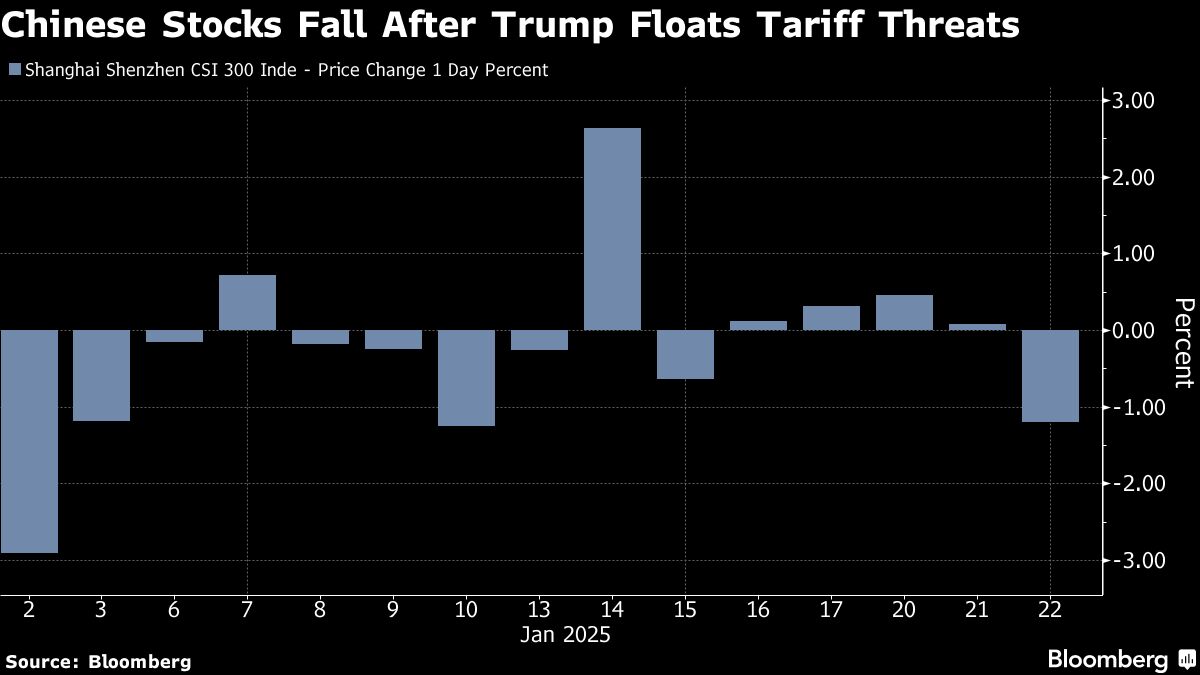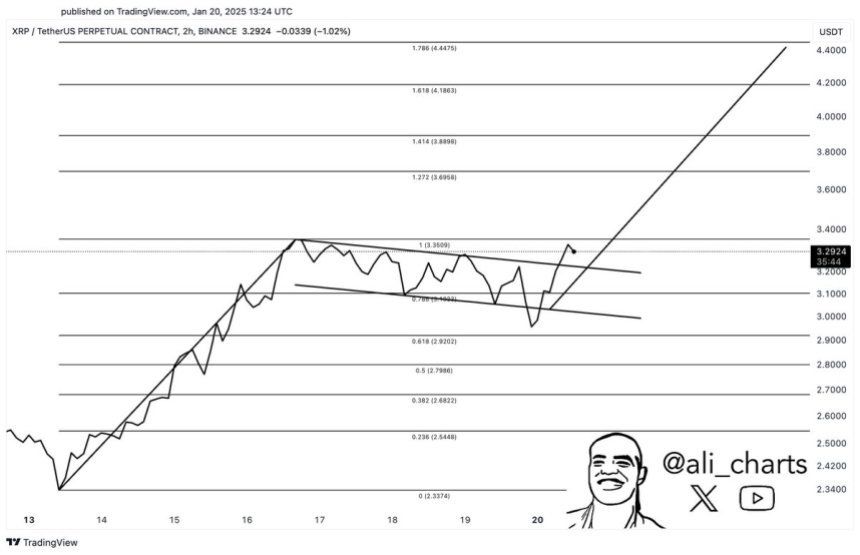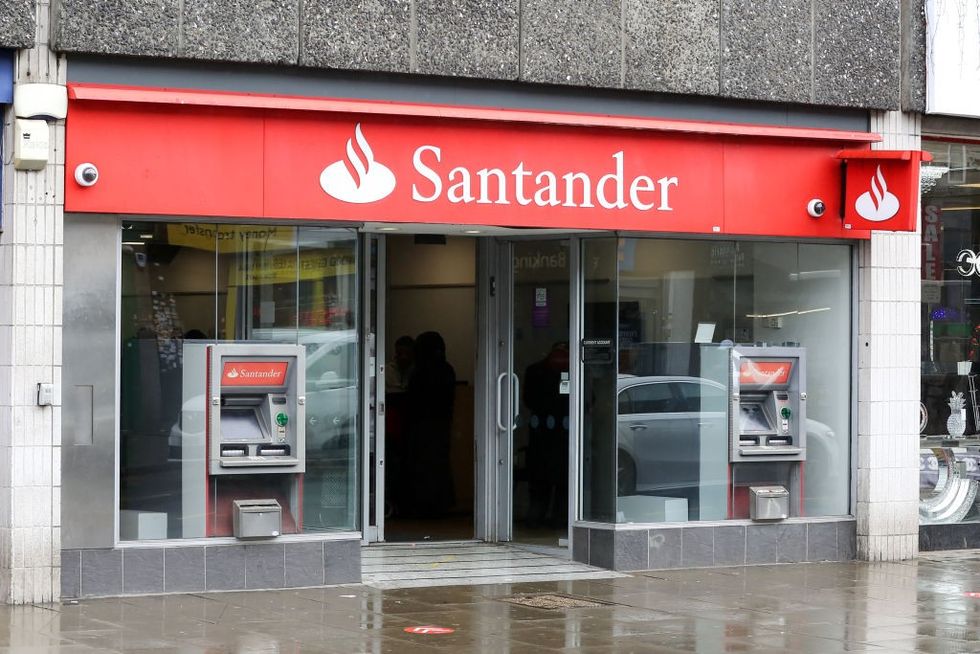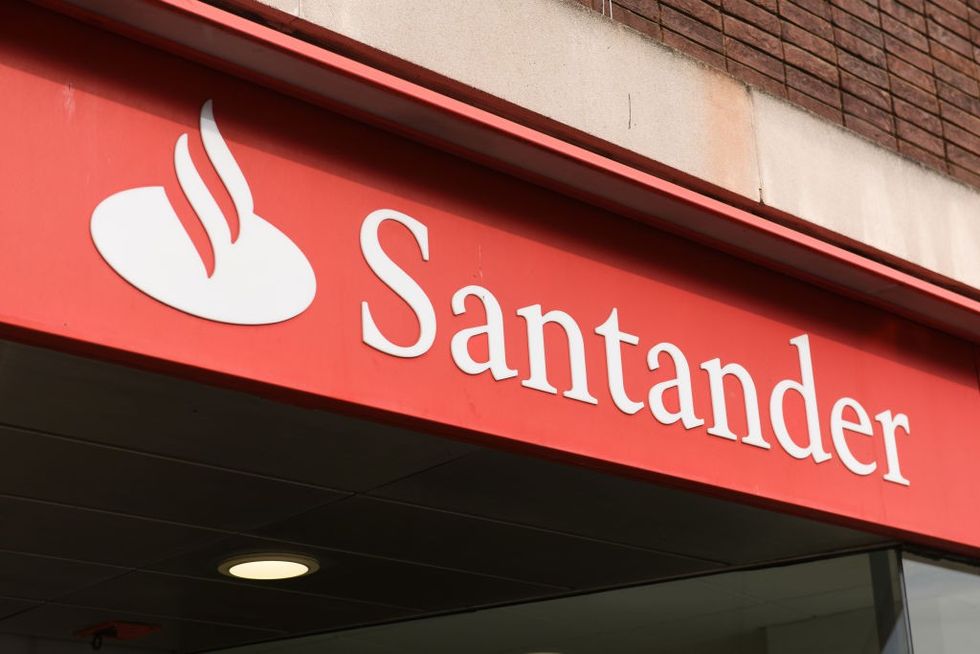Rupert Murdoch’s UK tabloid newspaper business has apologised to Prince Harry for unlawful activities at The Sun as the publisher reached a landmark settlement with him to drop long-running legal claims against it.
This is a developing story


Chinese stocks dropped after US President Donald Trump said his threat to impose 10% tariffs on the nation’s goods was still being considered.

Unlock the Editor’s Digest for free
Roula Khalaf, Editor of the FT, selects her favourite stories in this weekly newsletter.
Rupert Murdoch’s UK tabloid newspaper business has apologised to Prince Harry for unlawful activities at The Sun as the publisher reached a landmark settlement with him to drop long-running legal claims against it.
This is a developing story

TL;DR
The lawsuit between Ripple and the US Securities and Exchange Commission (SEC) remains ongoing despite numerous legal developments and changes in the agency’s leadership. Recall that the regulator’s Chairman, Gary Gensler, officially stepped down on January 20 and was replaced by crypto proponent Mark Uyeda.
The Commission has scheduled its first closed meeting under the new Acting Chairman for January 23, causing the XRP Army to speculate that the case against Ripple might be on the agenda this time. Some of the most optimistic predictions include a dismissal of the lawsuit.
It is worth mentioning that the SEC conducts such meetings quite frequently, and there are no public records showing that it has touched upon the aforementioned legal tussle in any of them.
Marc Fagel – a former regional director of the SEC for the San Francisco office – claimed that those expecting “something monumental to happen” at the upcoming gathering “are about to be disappointed.”
“This is the same meeting they hold nearly every week. They will vote on recommendations calendared weeks ago,” he assumed.
The anti-crypto Gensler might be out of the SEC, but the official resolution of the case against Ripple remains challenging. After all, the entities have been confronting each other in court for over four years, throwing punches at each other on every possible occasion.
The core issue in the lawsuit is whether XRP (Ripple’s native token) should be classified as a security. The SEC argues it was sold as an unregistered investment, while the company insists it is a digital asset used for payments and not subject to securities laws.
In 2023, Judge Analisa Torres ruled that XRP sales on public exchanges to retail investors did not constitute securities transactions. A year later, she ordered Ripple to pay a fine of $125 million for violating certain rules.
The penalty represented just a fraction of the $2 billion the SEC initially asked for, and somewhat expected, the firm was ready to settle it.
However, the watchdog appealed the 2023 verdict and recently filed the necessary opening brief, thus prolonging the lawsuit indefinitely.
LIMITED OFFER for CryptoPotato readers at Bybit: Use this link to register and open a $500 FREE position on any coin!


President Donald Trump announces a new US company called Stargate that will invest $500 billion in AI infrastructure, creating over 100,000 jobs. (Source: Bloomberg)

As XRP, currently the third-largest cryptocurrency by market capitalization, navigates recent fluctuations, analysts and market experts are optimistic about its potential for significant price growth.
After experiencing a brief dip toward $2.83 over the weekend, following an unsuccessful attempt to breach its all-time high of $3.40 set seven years ago, the sentiment surrounding XRP remains bullish.
In a recent post on X (formerly Twitter), market expert and technical analyst Egrag Crypto shared encouraging price targets for XRP investors, suggesting that historical price patterns indicate a possible blow-off top that could drive the token into double-digit territory.
Egrag highlighted three historical blow-off tops, demonstrating impressive percentage increases that XRP has experienced in the past: one saw a rise of 1,068%, another 2,636%, and a third recorded an increase of 406%.
By analyzing these surges alongside corrective phases, Egrag Crypto formulated potential price targets for the next blow-off top for the altcoin, suggesting levels of $53, $32, and $9.70, all of them surpassing by clear difference the tokne’s current record peak.
Egrag previously noted the importance of a critical price range between $4 and $5, indicating that once XRP reaches approximately $4.40, it will enter a “powerful energy field” that could significantly propel prices higher.
The analyst emphasized that traders should closely monitor price action, candle formations, and oscillator behaviors in this range to determine whether the market is poised for a substantial rally or facing a potential correction.
Despite the optimistic outlook, Egrag urged caution, stating, “I’m still feeling #BULLISHAF, but it’s crucial to remain level-headed when trading and investing, especially with #XRP.”
He expressed concern that market dynamics might be encouraging retail investors to exit, which could be a strategy to enable the emergence of two-digit prices.
Supporting this bullish sentiment, market analyst Ali Martinez has also weighed in on XRP’s trajectory, noting that the cryptocurrency has recently broken out of a bullish flag and is now targeting the $4.40 mark.

This indicates a near-term uptrend of nearly 40% for the altcoin, complementing its impressive monthly performance, which has already seen a surge of 43%. However, despite these positive figures, XRP is currently trading at $3.16, still 7.2% below its all-time high.
The price levels of $3.35 and $3.40 have proven to be significant hurdles for the altcoin, representing crucial barriers that must be overcome to initiate a price discovery phase.
On the downside, the token has established a significant price support range between $2.70 and $2.80 over the past week. This area has become a notable buying zone for investors anticipating further price increases.
Featured image from DALL-E, chart from TradingView.com


On Tuesday, bitcoin (BTC) options trading on the Chicago Mercantile Exchange (CME) showed the strongest bullish sentiment since Donald Trump’s Nov. 5 election victory.
Traders scrambled to buy calls, or options offering asymmetric upside exposure, driving the skew higher to 4.4%, the most since early November, according to data tracked by digital assets index provider CF Benchmarks.
Skew is the difference in implied volatility between calls and puts, or options offering downside protection, and positive values represent a bullish sentiment.
“Thirty-day topside skew in the bitcoin options market has reached levels not seen since the November election results,” Thomas Erdösi, head of product at CF Benchmarks, told CoinDesk. “This reflects a strong bullish sentiment, with traders actively positioning for upside exposure across both short- and long-term maturities.”
Bitcoin’s price rose as much as 5%, briefly topping $106,000 Tuesday after buyers defended the $100,000 support level despite President Trump failing to mention crypto or strategic bitcoin reserve in his inaugural speech the day before.
The bounce was accompanied by renewed uptake for the U.S.-listed spot ETFs, which registered a cumulative net inflow of $802 million, according to data from SoSoValue. BlackRock’s IBIT drew $661.8 million alone, helping solidify the bullish sentiment.
“ETF inflows have continued their impressive accumulation streak, marking four consecutive days of significant inflows, amounting to over $3 billion for Bitcoin alone. Bitcoin ($802M) and Ethereum ($74M) are receiving robust institutional backing, which could propel digital assets to new highs,” Valentin Fournier, an analyst at BRN, said in an email to CoinDesk.
Besides, long-term holders — wallets with a history of holding coins for over 155 days — are scaling back their profit-taking activities, according to blockchain data tracking firm Glassnode.
“Looking ahead, it’s possible that volatility levels might moderate slightly towards the end of the month, but we anticipate that the skew for topside will probably remain, barring any surprise policy developments. This will likely provide continued upward price pressure for the foreseeable future,” Erdösi said.


A small number of residents were allowed to return to the devastated Pacific Palisades and Altadena areas and firefighters quickly controlled small blazes that broke out. Read More

Indonesia’s antitrust agency KPPU fined Google 202.5 billion Rupiahs, equivalent to $12.6 million, on Wednesday for antitrust violation related to its payment system services for the Google Play Store.
The KPPU ordered the search giant to cease the mandatory use of Google Play Billing in the Google Play Store. It also asked Google to let all developers participate in the User Choice Billing (UCB) program and give them a minimum 5% service fee discount for a year after the decision is finalized, according to its statement.
The antitrust watchdog launched an investigation into Google in 2022 for its market dominance — in particular, the company required Indonesian app developers to use Google Play Billing (GPB). The agency found that the Google Pay Billing System had charged fees up to 30%, higher than other payment systems.
The Google Play Store handles payments between developers and users through the GPB System for in-app purchases. Google requires all purchases of digital products and services in the Google Play Store to go through the Google Play Billing system. At the same time, it prohibits other payment alternatives to Google Play Billing. The agency said that limiting the payment options led to fewer app users, reduced transactions and lower revenue.
The agency noted that the Google Play Store is the only app store pre-installed on all Android devices, with a market share over 50%. As for the search engine market, Google held a market share of 95.16% in the Indonesian search market, and other search engines such as Bing, Yahoo!, DuckDuckGo, and Yandex held the rest as of January 2024, according to Statista.
Google plans to appeal the ruling.
“We strongly disagree with the KPPU’s decision and will appeal. Our current practices foster a healthy, competitive Indonesian app ecosystem, offering a secure platform, global reach, and choice, including user choice billing — which enables alternatives to Google Play’s billing system,” a Google spokesperson, Danielle Cohen, said in an email statement.
“Beyond our platform, we actively support Indonesian developers through a comprehensive suite of initiatives, including Indie Games Accelerator, Play Academy, and Play x Unity, reflecting our deep investment in their success. We remain committed to complying with Indonesian law and will continue collaborating with the KPPU and stakeholders throughout the appeals process,” she added.
The tech industry has been closely watching a series of legal disputes involving Google being fined for breaching anti-competitive practices due to its misuse of dominant market power in various countries, including Indonesia, India, South Korea, France, the EU and the U.S. Japan’s antitrust regulator is likely to determine that Google has breached Japan’s antitrust laws and will order the tech behemoth to cease its monopolistic behaviors, according to Nikkei Asia.


The financial landscape is in constant flux, with market makers playing a pivotal role in ensuring trading liquidity and efficiency. Moving into 2025, choosing a suitable platform for one’s trading needs is as relevant as ever. This article looks at three market-making companies to consider for one’s trading strategies and investments. They stand out in this crowded field by ensuring seamless transactions and providing the liquidity required in a wide range of financial markets.
Gravity Team is an algorithmic crypto trading company that underscores efficiency and liquidity in crypto markets, rapidly setting the standard for crypto market makers. Its team of around 60 experts is growing in parallel with its global reach and market volume. The company has achieved a cumulative trading volume of approximately $400 billion since it was founded by a crypto-native team in 2017. It accounts for 1% of the crypto spot trading volume worldwide, is active on more than two dozen prominent crypto exchanges, and offers access to over 1,400 crypto asset pairs.
However, its dominance in emerging markets is its main advantage over competitors, of whom there is no shortage. On the market-making side, large-scale projects in need of liquidity in markets they wish to enter choose this platform to gain exposure. Users can avail themselves of fiat liquidity within exotic markets.
Gravity Team helps achieve equilibrium through high-frequency trading and by cooperating with various industry stakeholders. Its roles are carefully selected to contribute to this overarching goal. It works with projects in the Web3 space to market-make their coins or tokens and with CEXs to provide liquidity. Gravity Team attains its targets by leveraging innovative tools, a tightly-knit team of seasoned professionals, and extensive experience. As an ethical liquidity partner, Gravity Team mitigates risk concerns and attracts more customers to create even more liquidity.
Wintermute, a global algorithmic trading platform specializing in digital assets, aims to create efficient, highly liquid markets on and off centralized and decentralized exchanges. The platform provides liquidity on dozens of exchanges and trading platforms and boasts a pronounced impact on digital asset markets. The firm improves liquidity by partnering with promising projects. It supports many highly lucrative trading pairs and cooperates with all major exchanges.
Among its main advantages are 24/7/365 token liquidity, an absence of monthly or integration fees, and competitive spreads, even in the most dynamic markets. Wintermute’s talented DeFi team helps bridge tokens from other blockchains to Ethereum.
Highly liquid assets are behind many flourishing markets. Keyrock boosts its clients’ liquidity to create fair and efficient markets and put digital assets on a promising trajectory. Its expert team and algorithms constantly scan platforms to provide additional support where needed. Their market-making algorithms ensure reliable pricing and performance monitoring around the clock. Clients receive a wide range of trading insights and statistics on demand. The market maker guarantees transparency by aggregating price data and liquidity from almost 100 exchanges. The infrastructure attracts traders through market-wide quotes.
The platform facilitates trades and unifies prices, eliminating price discrepancies across markets. As a result, clients benefit from harmonized prices and tightened bid-ask spreads. A smooth trading experience is ensured, with clients readily entering and exiting trading positions. The algorithms guarantee markets can absorb an optimal number of trades, with high-volume ones becoming a trust factor at the right price.
Modern market makers face a plethora of challenges that test their flexibility, adaptability, and resilience. While market volatility creates profit opportunities, it can also lead to substantial risks. Bid-ask spreads widen during periods of high volatility, resulting in an increased risk of losing the assets one holds. The three market makers reviewed leverage advanced risk management strategies to mitigate volatility, such as dynamic pricing models that analyze real-time market conditions and adjust bid-ask spreads correspondingly. They hedge their positions and manage their inventory levels efficiently via algorithmic trading strategies. Diversification across different markets and assets is another strategy leveraged to extenuate risk.
Innovation is considered a plus, with new technologies and products constantly entering financial markets. Market makers cannot stay competitive if they’re not on board with this trend. They explore emerging markets, adopt bleeding-edge technologies, and develop new trading algorithms to remain relevant. They make substantial investments in research and development to foster innovation. Their teams expand to include talented developers and traders who build new algorithms and trading strategies. They also stay abreast of the latest technological advancements by collaborating with solution providers and taking part in industry consortia. Market makers embrace AI, cloud computing, and blockchain technology to enhance their operations.
One final challenge involves regulatory pressures. The rules governing financial markets differ depending on the jurisdiction. Regulatory compliance entails significant expenditure, which is unavoidable as legitimate market makers realize non-compliance will result in reputational damage and even more significant fines. The reviewed market makers navigate regulatory pressures by investing in specialized legal and compliance teams. They implement sophisticated compliance software to monitor real-time transactions, ensuring all trades comply with the applicable regulations. Continuous staff training on best practices and regulatory changes also mitigates compliance risks.
Disclaimer: This article is provided for informational purposes only. It is not offered or intended to be used as legal, tax, investment, financial, or other advice.

Calamos Investments launches Bitcoin ETFs with capped returns and downside protection, offering investors regulated exposure to Bitcoin with risk management options.

Santander’s executive chairman Ana Botin has firmly rejected speculation about the bank’s potential exit from Britain, declaring “we love the UK” at the World Economic Forum in Davos.
Botin stated that Britain “is a core market and will remain a core market for Santander fullstop.”
The Spanish banking giant’s boss moved swiftly to quash recent reports suggesting the lender was considering leaving the UK market after two decades.
She blamed fee-seeking investment bankers for stirring up the rumours about Santander’s possible departure.
Botin said: “You know the army of investment bankers that wants to get fees? So if they start, these kinds of people start looking at M&A, they start looking around. It’s definitely not coming from us.”

The bank operates 444 branches nationwide and holds £200 billion in customer lending, making it one of Britain’s largest lenders
GETTY
The strong denial comes after reports emerged that Santander was reviewing strategic options for its UK business, including a potential complete exit from the market.
Such a move would have affected 14 million customers and approximately 20,000 employees across Britain.
The bank operates 444 branches nationwide and holds £200billion in customer lending, making it one of Britain’s largest lenders.
Reports had suggested the review was driven by mounting frustrations over UK regulations, including costly post-financial crisis rules requiring banks to separate their retail and investment operations.
The Spanish banking group, which first entered the UK market through its acquisition of Abbey National in 2004, was reportedly examining options to focus on regions with higher growth potential, such as the United States.
Far from expressing frustration with Britain, Botin highlighted the country’s post-Brexit advantages at Davos.
“The UK has a huge opportunity. Why? Because it can move faster. The UK does not have to agree with 27 countries now,” she told the World Economic Forum.
While she acknowledged regulatory challenges, her concerns extended beyond Britain’s borders saying: “Let’s take a pause on regulation because that is constraining growth, big time.”
LATEST DEVELOPMENTS:
The bank has consistently maintained its commitment to the UK market throughout the speculation.
A Santander spokesman reiterated: “We remain focused on providing excellent products and services to our 14 million customers in the UK.”
Despite Botin’s optimistic outlook, Santander has faced recent challenges in its UK operations.
In October 2024, the bank announced 1,400 job cuts across its British business as part of cost-reduction efforts.

Speculation grew that santander could quit the UK High Street
GETTY
The lender has also set aside £295million to cover potential compensation costs related to a car finance commission scandal.
This provision contributed to a significant decline in the bank’s third-quarter profits, which fell to £143million from £413million in the previous quarter.
However, Santander maintains its commitment to the UK market remains unchanged.
A Santander spokesman emphasised: “The UK is a core market for Santander and this has not changed.”


These ’90s fashion trends are making a comeback in 2025


The Season 9 ‘ Game of Thrones’ is here.


9 spring/summer 2025 fashion trends to know for next season


The old and New Edition cast comes together to perform You’re Not My Kind of Girl.


Ethical Hacker: “I’ll Show You Why Google Has Just Shut Down Their Quantum Chip”
Uber and Lyft are finally available in all of New York State
Disney’s live-action Aladdin finally finds its stars
Steph Curry finally got the contract he deserves from the Warriors
Mod turns ‘Counter-Strike’ into a ‘Tekken’ clone with fighting chickens
Your comprehensive guide to this fall’s biggest trends
You must be logged in to post a comment Login